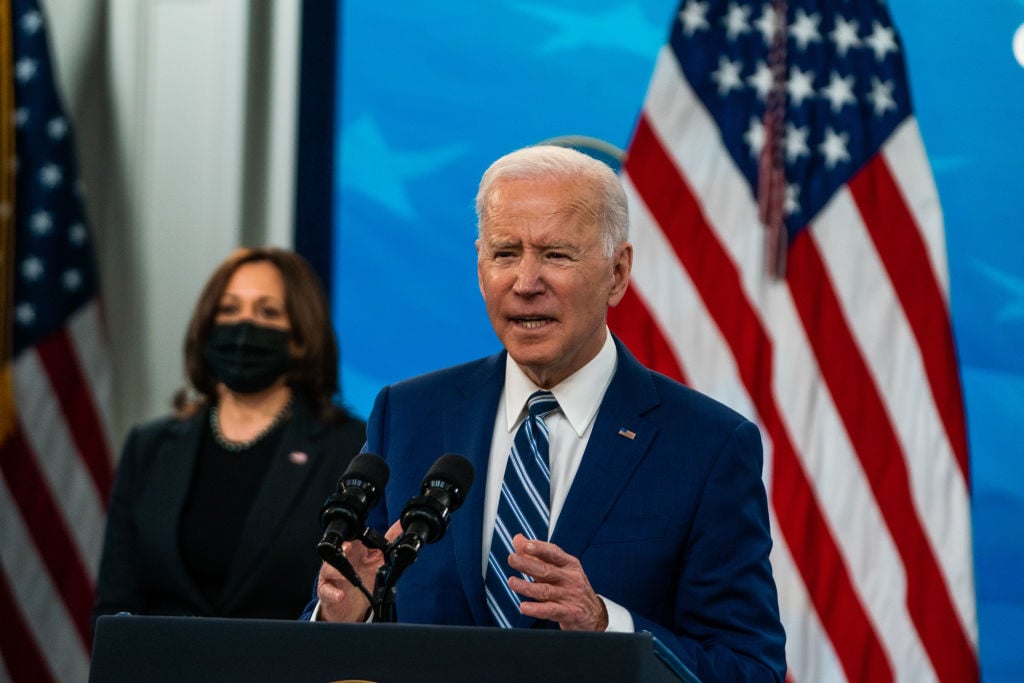
President Biden unveiled his new infrastructure legislation plan Wednesday, proposing billions of dollars for higher education over eight years.
The plan -- which is about $2 trillion in total -- would give $12 billion to updating infrastructure in community colleges and $50 million to the National Science Foundation. Historically Black colleges and universities and other minority-serving institutions would also be in for more funding under the proposal. The plan calls for a $10 billion investment in research and development and $15 billion to create 200 research incubators at those institutions, with the framing that those investments could eliminate racial and gender inequities in R&D and STEM. Of the $40 billion dedicated to improving research infrastructure and laboratories, half would be set aside specifically for HBCUs and other minority-serving institutions.
While there are some additions they say could be made, many in higher education are applauding the plan and its proposed investment.
“One thing that strikes you when you look at the summary the Biden folks put out is just the number of ways higher education serves in the recovery,” said Jon Fansmith, director of government relations at the American Council on Education. “It’s a pretty impressive commitment to higher education but I think it also demonstrates how inextricably linked colleges and universities are to the health of our economy.”
Fansmith said that he would have liked to see doubling of the value of federal Pell Grants in the proposal, as well as a bit more investment in four-year colleges and universities.
“While no one argues about the needs that exist at community colleges in the infrastructure space, there are lots of four-year institutions that similarly were impacted by the pandemic, similarly are underresourced and could really use the support,” he said.
LaToya Owens, of the UNCF, a philanthropic organization for Black students and HBCUs, said the investment in historically Black colleges is sorely needed. HBCUs have trailed far behind top predominantly white institutions in private, state and federal funding, she said, and while there has recently been some more interest in things like student scholarships for HBCUs, the institutions themselves also need to be supported.
Giving specific support to STEM infrastructure at HBCUs also is the right idea to help Black students in STEM, she said, since HBCUs tend to overproduce those students. While they are only 3 percent of higher ed institutions, they educate 10 percent of Black students and graduate 24 percent of Black students in STEM.
However, beyond research, development and STEM, the federal government could invest more in general institutional infrastructure if it wants to help Black college students, Owens said.
“I absolutely think specific investments in the institutions are needed. If you say you want to serve underserved students and communities, not only do these students need to go to schools that understand how to best educate them, the institutions need to be supported, because they provide a number of resources,” she said. “We have decades of underfunding to make up for.”
Janette Martinez, senior policy and research analyst at Excelencia in Education, said the investments could help Hispanic-serving institutions upgrade their facilities to provide research opportunities to their students. Also helpful, she said, is the proposed funding for community colleges.
“Over 40 percent of Hispanic-serving institutions are community colleges,” she said. “This could really go a long way in supporting those institutions that are enrolling Latino students.”
David Baime, senior vice president for government relations at the American Association of Community Colleges, said the bill addresses issues that have been important with the organization’s members. Money for infrastructure, he said, is sorely needed.
“We hear constantly about the ongoing deferred maintenance needs of the colleges, because modernized facilities help them provide state-of-the-art education,” Baime said via email. “Community colleges routinely aspire to upgrade their facilities and undertake new building. This is hindered only by lack of adequate funding, which is what makes the proposal so positive.”
Baime also called attention to other features of the bill that would impact community colleges and their students. The proposal calls for investments in job training and career pathways, which community colleges are closely involved in, and the nationwide expansion of broadband. Many community college students are still learning remotely through the pandemic, and some have been limited in their studies by lack of internet access.
Barbara Snyder, president of the Association of American Universities, said the investments in research and development will help undo years of neglect to the country’s science and innovation landscape. The $50 billion for the NSF will also go toward building a technology directorate to focus on fields such as semiconductors and advanced computing.
“When you look at the share of GDP that we’ve been investing in research, that has gone down significantly, and it’s important to try to turn that around. That has to do with our competitiveness and also our quality of life for Americans going forward,” she said. “It’s a wise investment and a tremendous recognition that there has been underinvestment in the past.”
Snyder said she was also pleased to see the investment specifically in research at HBCUs and minority-serving institutions.
“Innovation is far better when you have all the best minds at the table,” she said.
When asked about whether the proposal could pass through Congress, Fansmith, from ACE, said that the success of the last reconciliation bill suggests it’s a strong possibility, though this plan has tax increases and other provisions that might make the process different. Primarily the funds would come from an increase in corporate taxes -- a measure Republicans have vowed to oppose.
“It’ll change when it gets to Congress, because it always does,” he said. “But you can certainly see substantively this bill moving forward to being enacted into law.”
from Inside Higher Ed | News https://ift.tt/3fB1LCb


No comments:
Post a Comment